#myrmecobius
Explore tagged Tumblr posts
Text

Numbat (Myrmecobius fasciatus), juveniles, family Myrmecobiidae, Western Australia
ENDANGERED.
Sometimes referred to as the "Marsupial Anteater", and like "true anteaters", they actually eat mainly termites.
Once wide spread across Australia, they are now only found in small colonies in Western Australia and NSW.
photograph by John Lawson
681 notes
·
View notes
Text

A group of numbats (Myrmecobius fasciatus) in Australia
by Mark Sanders
#numbat#marsupials#myrmecobius fasciatus#myrmecobius#Myrmecobiidae#dasyuromorphia#marsupialia#mammalia#chordata#wildlife: australia#wildlife: oceania
217 notes
·
View notes
Text

Numbat
43 notes
·
View notes
Text

Myrmecobius fasciatus (Numbat)
By Mark Sanders


#mark sanders#photographer#numbat#flickr#myrmecobius fasciatus#australia#animal#mammal#wildlife#nature
112 notes
·
View notes
Text
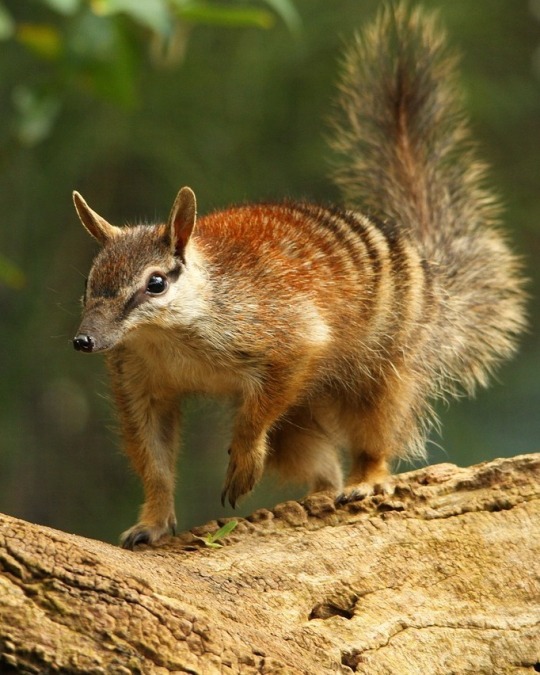
You might know about wombats, but what about numbats (Myrmecobius fasciatus)? These Australian marsupials are picky eaters with a taste for termites. Using their long tongues, these specialists can slurp down 20,000 of the insects in a single day! Unlike many mammals, the numbat’s mouth is filled with dull, peg-like teeth. But that doesn’t stop this critter, because it doesn’t chew its food anyway.
Photo: seashalia, CC0 Content, Pixabay
#science#nature#natural history#animals#did you know#fact of the day#animal king#numbat#australi#mammals#cool animal#cute animals
960 notes
·
View notes
Text

The numbat (Myrmecobius fasciatus), also known as the noombat or walpurti is an insectivorous marsupial. It is diurnal and its diet consists almost exclusively of termites
148 notes
·
View notes
Text
Happy #WorldNumbatDay!
From the blog:
ANIMAL ART OF THE DAY for World Numbat Day: Europe’s first published images

Plate XXVII from Transactions of the Zoological Society of London V.2, the illustration accompanying George Waterhouse's first scientific description of the Numbat as Myrmecobius fasciatus, 1836.
#animals in art#animal holiday#european art#19th century art#natural history art#scientific illustration#numbat#World Numbat Day#endangered species#Australian animals#blog post
12 notes
·
View notes
Note
Je t'en prie! Assigne-moi une Bête 🥚
comme tu le souhaites mon ami!

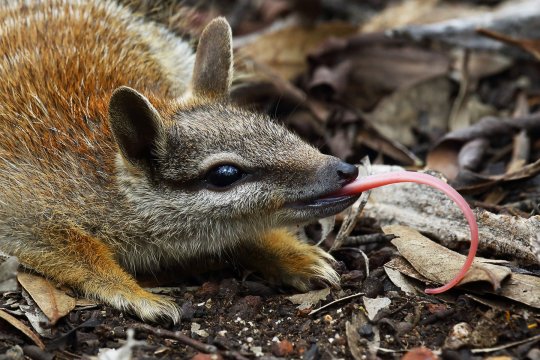
walpurti!
(Myrmecobius fasciatus)
82 notes
·
View notes
Text
10 Lesser-Known Animals and Their Unique Eating Habits 🦜🌿
Aye-Aye (Daubentonia madagascariensis)
Habitat: Madagascar 🌴
Diet: Insects, particularly wood-boring grubs 🪲
Feeding Habits: The aye-aye uses its long, thin middle finger to tap on trees to locate hollow chambers where grubs reside. Once a grub is located, it gnaws a hole in the wood with its forward-slanting incisors and uses its elongated finger to extract the grub. 🦷👆

Blobfish (Psychrolutes marcidus)
Habitat: Deep sea, off the coasts of Australia and New Zealand 🌊
Diet: Crustaceans, sea urchins, and other deep-sea creatures 🦀
Feeding Habits: The blobfish lacks muscles, so it doesn't actively hunt. Instead, it floats along the sea floor, opening its mouth to suck in any edible matter that drifts by. 🍽️

Pangolin (Pholidota)
Habitat: Various habitats across Asia and Africa 🌍
Diet: Ants and termites 🐜
Feeding Habits: Pangolins have long, sticky tongues that they use to probe ant and termite nests. They have strong claws to break into the nests and a sticky tongue to lap up the insects. 👅

Gharial (Gavialis gangeticus)
Habitat: Rivers in the Indian subcontinent 🌊
Diet: Fish 🐟
Feeding Habits: The gharial has a long, narrow snout filled with sharp teeth, perfect for catching fish. It uses a swift side-to-side snapping motion to catch fish swimming by. 🐊

Star-Nosed Mole (Condylura cristata)
Habitat: Wet lowland areas in North America 🦔
Diet: Small invertebrates, aquatic insects, worms 🪱
Feeding Habits: This mole uses its star-shaped nose, covered in sensory receptors, to detect prey. It can identify and consume small prey in a fraction of a second. 🌟

Hoatzin (Opisthocomus hoazin)
Habitat: Swamps, river forests of the Amazon Basin 🌳
Diet: Leaves and vegetation 🍃
Feeding Habits: The hoatzin has a specialized digestive system that ferments vegetation similar to a cow’s stomach. It spends hours digesting leaves in its crop, a part of its digestive tract. 🐦

Numbat (Myrmecobius fasciatus)
Habitat: Eucalyptus forests in Australia 🌏
Diet: Termites 🐜
Feeding Habits: Numbats use their long, sticky tongues to probe into narrow crevices and galleries within termite mounds. They can eat up to 20,000 termites a day. 👅

Leafcutter Ant (Atta spp.)
Habitat: Tropical rainforests in Central and South America 🌲
Diet: Fungi that they cultivate 🧫
Feeding Habits: Leafcutter ants cut leaves and carry them back to their nests, where they use the leaves to grow a special fungus, which serves as their primary food source. 🍄

Purple Frog (Nasikabatrachus sahyadrensis)
Habitat: Western Ghats of India 🌄
Diet: Termites 🐜
Feeding Habits: Spending most of its life underground, the purple frog comes out only during the monsoon season to breed. It uses its specialized tongue to feed on termites in underground colonies. 🐸
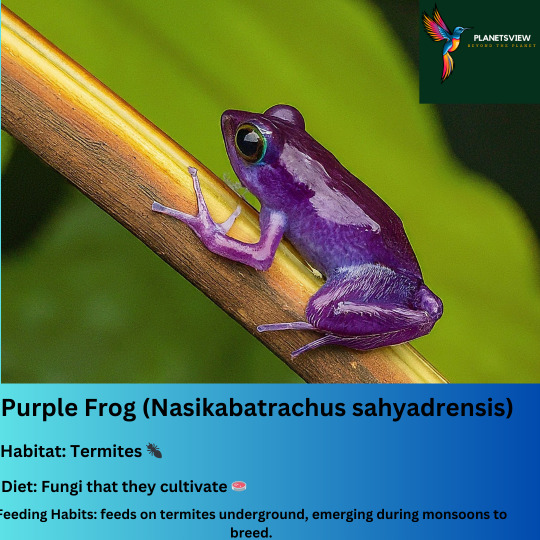
Vampire Finch (Geospiza difficilis septentrionalis)
Habitat: Galápagos Islands 🌴
Diet: Blood of other birds, insects 🌿
Feeding Habits: The vampire finch pecks at the skin of larger birds like boobies to drink their blood. This behavior likely evolved due to scarce food resources. 🦜

These lesser-known animals each have unique and fascinating feeding habits that highlight the incredible diversity of the natural world. 🌍✨
#animals#plants#forest#animal#wildlife#planet#nature#nature photography#naturelovers#natureconservation#animal protection#animal print#animal products
7 notes
·
View notes
Note
Based solely on their names, list your characters from favorite to somewhat less favorite
MY OCS?? BASED ON THEIR NAMES??? OK OK
i feel like i should mention that only two of my ocs use their real names sooo it's a lot of aliases or nicknames.
1. Songbird
ngl one of my favorite names ive ever come up with. he's called this bc it was what his (dead) boyfriend used to call him and then when he decided to cut out his own eyes due to being haunted by visions of said boyfriend the scars made the rough shape of a bird. he's embraced the name now and uses his shadow-related abilities to make his own shadow that of a songbird. :)
2. Crook
what can i say? he's a silly goblin that commits crimes. of course he goes by crook.
3. Red
it's a basic name, but i love it. he's the first character that ever got a name and it's not his real name (his real name is at the BOTTOM of this list i hate it) and it's literally just based on the color of his blood lmao. i also like it because it's what everyone calls him just out of instinct. he didn't come up with it, it's just who he is.
4. Ruby
red's sister. her name makes them both sound silly no matter which of his names you refer to him as and i think that's neat.
5. Myrmecobius
i made up fake constellations and then named a big scary bounty hunter after one of them. what more could you want? (bonus points bc his bf (red) loves the stars)
6. Alitta/Indri/Coturnix/Fregata
all of these guys are tied. similar to myr, they're all named after fake constellations and i loved making up the constellations and assigning them meanings that match the character personalities
7. Audrey
the other only character that goes by her real name. it's just a cute name and it suits her! :)
8. Honey
this was a filler name for the longest time and it, unfortunately, stuck. i do really like using pet names as proper names though.
9. Cinnamon
same thing. filler name that unfortunately stuck around. but at least she's friends with honey and they can be Baked Goods together
10. Jayd
red's real name. ew. i hate it. but he came with it and i can't change it
that's all!!! if you ever wanna know anything else about these guys and the show im writing for them, feel free to ask!! i love talking about them :)
6 notes
·
View notes
Note
numbat
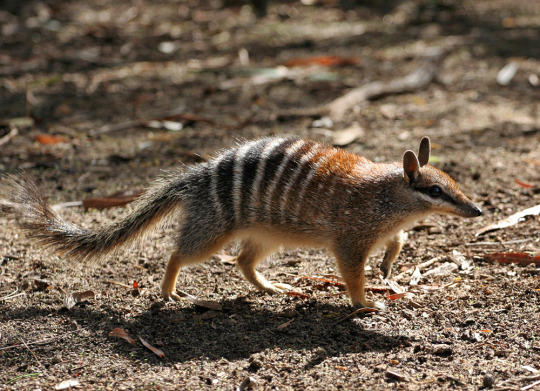
whadda hell...



its got a tong and evrything...

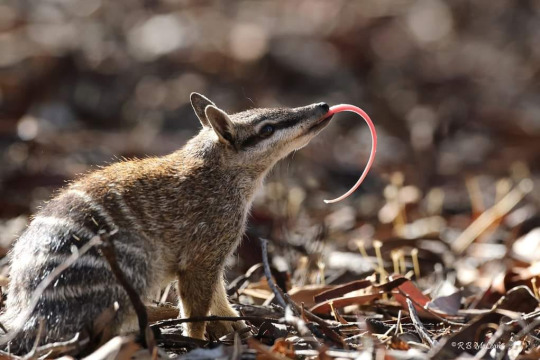
its an insectivorous marsupial.... its diurnal and its diet consists almost exclusively of termites........ its endangered.............
The numbat genus Myrmecobius is the sole member of the family Myrmecobiidae, one of four families that make up the order Dasyuromorphia, the Australian marsupial carnivores.[11]
The species is not closely related to other extant marsupials; the current arrangement in the order Dasyuromorphia places its monotypic family with the diverse and carnivorous species of Dasyuridae. Genetic studies have shown the ancestors of the numbat diverged from other marsupials between 32 and 42 million years ago, during the late Eocene.[12]
Two subspecies have been described, but one of these—the rusty coloured Myrmecobius fasciatus rufus Finlayson, 1933,[13][14]—has been extinct since at least the 1960s, and only the nominate subspecies (M. fasciatus fasciatus) remains alive today. The population described by Finlayson occurred in the arid central regions of South Australia, and he thought they had once extended to the coast.[13] The separation to subspecies was not recognised in the national census of Australian mammals, following W. D. L. Ride and others.[a] As its name implies, M. fasciatus rufus had a more reddish coat than the surviving population.[15] Only a very small number of fossil specimens are known, the oldest dating back to the Pleistocene, and no other species from the same family have been identified.[15]

areyou seeing this shit? oh ym god.
The numbat is a small, distinctively-striped animal between 35 and 45 centimetres (14 and 18 in) long, including the tail, with a finely pointed muzzle and a prominent, bushy tail about the same length as its body. Colour varies considerably, from soft grey to reddish-brown, often with an area of brick red on the upper back, and always with a conspicuous black stripe running from the tip of the muzzle through the eye to the base of the small, round-tipped ear. Between four and eleven white stripes cross the animal's hindquarters, which gradually become fainter towards the midback. The underside is cream or light grey, while the tail is covered with long, grey hair flecked with white. Weight varies between 280 and 700 g (9.9 and 24.7 oz).[15][19]
Unlike most other marsupials, the numbat is diurnal, largely because of the constraints of having a specialised diet without having the usual physical equipment for it. Most ecosystems with a generous supply of termites have a fairly large creature with powerful forelimbs bearing heavy claws.[20] Numbats are not large, and they have five toes on the fore feet, and four on the hind feet.[15] However, like other mammals that eat termites or ants, the numbat has a degenerate jaw with up to 50 very small, nonfunctional teeth, and although it is able to chew,[15] rarely does so, because of the soft nature of its diet. Uniquely among terrestrial mammals, an additional cheek tooth is located between the premolars and molars; whether this represents a supernumerary molar tooth or a deciduous tooth retained into adult life is unclear. As a result, although not all individuals have the same dental formula, in general, it follows the unique pattern: 4.1.3.1.43.1.4.1.4[15]
Like many ant- or termite-eating animals, the numbat has a long and narrow tongue coated with sticky saliva produced by large submandibular glands. A further adaptation to the diet is the presence of numerous ridges along the soft palate, which apparently help to scrape termites off the tongue so they can be swallowed. The digestive system is relatively simple, and lacks many of the adaptations found in other entomophagous animals, presumably because termites are easier to digest than ants, having a softer exoskeleton. Numbats are apparently able to gain a considerable amount of water from their diets, since their kidneys lack the usual specialisations for retaining water found in other animals living in their arid environment.[21] Numbats also possess a sternal scent gland, which may be used for marking their territories.[15]
Although the numbat finds termite mounds primarily using scent, it has the highest visual acuity of any marsupial, and, unusually for marsupials, has a high proportion of cone cells in the retina. These are both likely adaptations for its diurnal habits, and vision does appear to be the primary sense used to detect potential predators.[15]
fucking. aminal

25 notes
·
View notes
Text
youtube
Numbat (Myrmecobius fasciatus), family Myrmecobiidae, order Dasyuromorphia, Western Australia
ENDANGERED.
Sometimes referred to as the "Marsupial Anteater", and like "true anteaters", they actually eat mainly termites.
Once wide spread across Australia, they are now only found in small colonies in Western Australia and NSW.
video: 1 Minute Animals
95 notes
·
View notes
Text

It seems numbats (Myrmecobius fasciatus) can't handle the heat! New research shows numbats are reaching a body temperature greater than 40°C within only ten minutes of activity in the sun, despite using fur techniques to regulate body temperature. So, what does this mean for the future conservation of this endangered native species? Link to find out
cc: Australian Geographic
1 note
·
View note
Text
NUMBAT
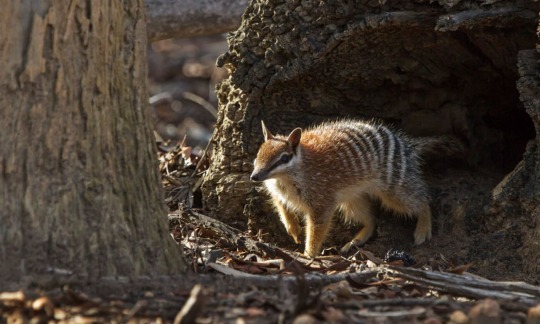


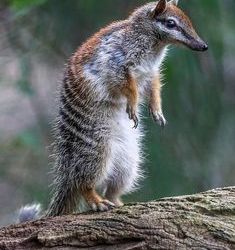

This species is Endangered!!
Scientific name: Myrmecobius fasciatus
Nyoongar name: Noombat
links and studd
#endangered animals#endangered species#cool animals#cute animals#numbats#marsupials#wow#australian animals
0 notes
Text

Numbat - Myrmecobius fasciatus
Another huge thrill on the trip with Inala Nature Tours was seeing a numbat in Dryandra Woodland National Park in south west Western Australia. These amazing marsupials are endangered.
By Jenny Thynne
#jenny thyne#photographer#numbat#animal#flickr#mammal#wildlife#myrmecobius fasciatus#australia#dryandra woodland national park#western australia#nature
90 notes
·
View notes
Text
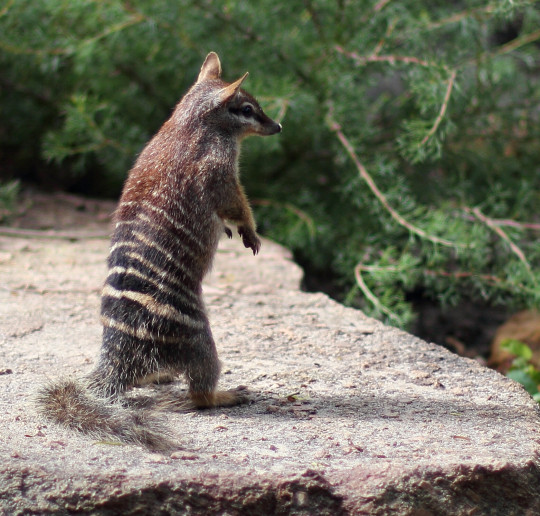
Numbat Myrmecobius fasciatus
Source: S J Bennett
3 notes
·
View notes